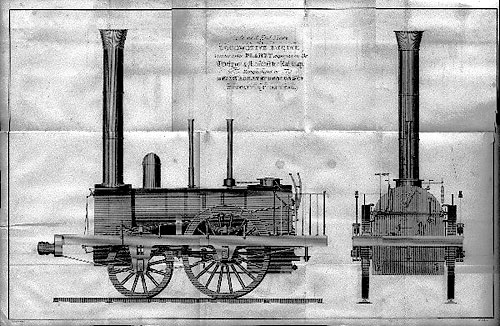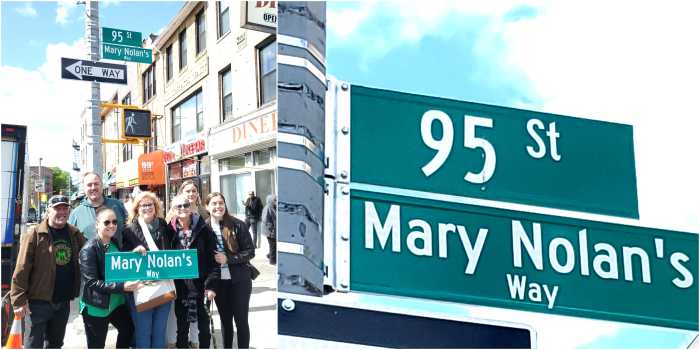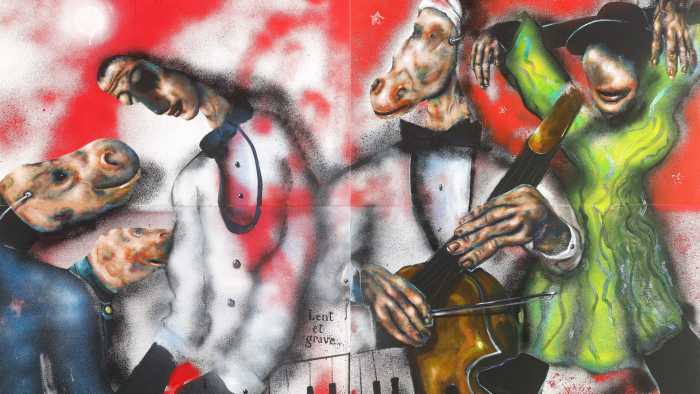High-tech scientific testing detected a 20-foot-long metallic “anomaly” below Atlantic Avenue — adding coal to fire of an urban legend centered around a 19th century steam locomotive rumored to be buried inside a long-abandoned tunnel.
Engineering consultants detected the odd finding under the surface of the bustling street near Hicks Street, deep inside a half-mile tunnel that was built in 1844 as part of a planned route to Boston, according to an investigative study conducted by Brinkerhoff Environmental Group.
The project got shelved in 1861 and was lost to history until railway aficionado Bob Diamond discovered an open section of the obsolete Long Island Rail Road tunnel running from Hicks Street to Boerum Place in 1981 when he was just 19 years old.
Diamond has long claimed there’s a locomotive buried at the end of the tunnel, and he says the discovery of a metal object is the biggest proof yet.
“It’s one thing to believe that something is real for more than 30 years and its another thing to actually know it exists,” said Diamond, founder of the Brooklyn Historic Railway Association.
“It’s like finding a giant hoard of gold,” he said. “That locomotive has been sitting there since the outbreak of the Civil War — it’s like a living piece of history.”
The train buff spent 28 years leading visitors down a manhole for popular tours of the abandoned passage until the Department of Transportation closed the tunnel by the order of Fire Department officials, who deemed it a safety hazard in 2010.
Diamond filed suit in an attempt to reopen the tunnel and managed to obtain a copy of the “top-secret” scientific findings — uncovered by a team of experts hired by National Geographic for a for a proposed television special on the urban legend — more than a week ago as part of his year-long case against the city.
The documents detail how engineering consultants from the New Jersey-based firm scanned Atlantic Avenue’s from street-level with high-powered, ground-penetrating electromagnetic devices in search of the cast iron locomotive in January of 2011.
“It is conceivable that the suspect locomotive is located between the middle and south sides of Atlantic Ave. and a separate smaller anomaly is located on the northern side of Atlantic Ave.,” wrote Matthew Powers, director of geophysical services for the firm, in an inside e-mail obtained by this newspaper.
“Based upon Brinkerhoff’s interpretation of the geophysical data, there is no question that something(s) metallic is buried under Atlantic Ave., its just a matter of what and in what orientation,” wrote Powers.
Diamond has no doubt that the 20-foot-long intact metallic structure is a locomotive dating back to the 1800s and that the smaller metal item is a railroad car.
“The only object that was on a railroad back in those days that was 20-feet-long and that would give off a strong magnetic signal would be a locomotive,” he said. “There is nothing that a railroad used back then that would fit that description — everything else was made out of wood.”
Diamond, who believes the locomotive is buried behind a four-foot-thick stone wall and 70 feet of dirt, is itching to get back into the tunnel and feast his eyes on the historic steam-powered locomotive.
“If I could get back down into the tunnel I would be digging with my teeth and fingernails trying to get at that thing,” said the railway enthusiast. “It will make my lifelong mission in life fulfilled.”
However, the approval of the excavation depends on the city.
Department of Transportation officials would not comment because of the ongoing litigation, but city lawyer Warren Shaw said the locomotive hasn’t had much power in court so far.
“The issue of a possible locomotive was raised in previous court proceedings,” he said. “The judge dismissed every aspect of the complaint related to the alleged locomotive.”
But Diamond is optimistic — and he says the city could turn this train into an engine for Atlantic Avenue.
“I’m hoping that the city is going to realize what a great find this is … and use this as a world-class tourist attraction that has the potential to help revitalize the western end of Atlantic Avenue,” he said. “This is our big chance to make something out of the tunnel and this amazing archaeological find.”
Officials at Brinkerhoff Environmental Group declined to comment on the matter because of Diamond’s ongoing lawsuit with the city.
Reach reporter Natalie Musumeci at nmusumeci@cnglocal.com or by calling (718) 260-4505. Follow her at twitter.com/souleddout.




















